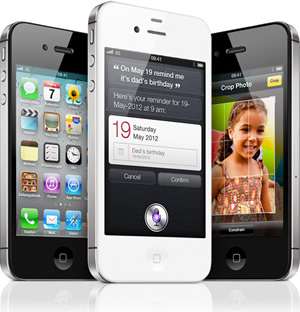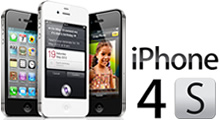 In October 2011 the iPhone 4S snatched 42.8 percent share of the UK market for new sales, and scored an equally impressive 96 percent satisfaction rate over in the States. However, given the poor reaction to the company’s latest iDevice and the handset’s lacklustre features, can this popularity really last, or did Apple just hand market domination to Android?
In October 2011 the iPhone 4S snatched 42.8 percent share of the UK market for new sales, and scored an equally impressive 96 percent satisfaction rate over in the States. However, given the poor reaction to the company’s latest iDevice and the handset’s lacklustre features, can this popularity really last, or did Apple just hand market domination to Android?
Leading up to Apple’s latest smartphone launch, the blogosphere was rife with murmurs of a 4-inch screened iPhone 5, complete with a ridiculously-impressive rear-facing camera and built-in NFC technology. And we were excited.
At the latest minute, the tech world learnt that – despite a daily slew of exciting new rumours – the company was in fact preparing the iPhone 4S all along, essentially a faster, smarter iPhone 4. Sure, it has a better camera and great voice recognition – but it is, as Tim Cook all but admitted, merely an iPhone 4 with more advanced innards. Even they aren’t that impressive, with its processor clocking in at 800MHz.
“It’s been 16 months and all you’ve got is an A5 processor in the existing iPhone 4,” BGC Partners analyst Colin Gillis said of the new Apple phone.
The iPhone 4S launch was the first time Apple broke their yearly tradition of under-promising and over-delivering, and despite selling 4 million handsets in one weekend – fans, and the tech world, were all left feeling a bit underwhelmed.
Why? Because the iPhone 4S doesn’t have the “wow” factor, unlike its rivals – such as the 4.3-inch-screened Samsung Galaxy S2 and HTC Sensation, which packs 1.2GHz dual-core processors and screen’s which are finally rivalling the Retina Display. The iPhone 4S still arrives with its small 3.5-inch touchscreen in tow, equal to only the mid-range HTC Desire S and Samsung Galaxy Ace handsets.
Android has been inching closer to iOS on many points, and now Google has a chance to leapfrog Cupertino, seen as Apple has already outed its strategy for the 12 months. Over the next year, Android will continue to creep up on Apple until all the important specs are bettered by the majority of Android devices.
“Apple no longer has a leading edge, its cloud service is even behind Android; it can only sell on brand loyalty now,” said Gartner analyst C.K. Lu in Taipei.
Saying that, rumours are already hotting up about next-year’s iDevice, which could finally see the unveiling of the iPhone 5. The phone that – 24 months prior to its announcement – had iFans drooling at the prospect of its release. Unlike the iPhone 4S – as witnessed through the transition from the iPhone 3G and 3GS – this phone will be a completely new model, and could well sport that 4-inch touchscreen and new multi-touch home button we’d all been hoping for the first time around.
The question is, will people be able to wait another agonising 12 months for the larger-screen and exciting new features, or will the next Samsung Galaxy device – no doubt with its mind-blowing display and quad-core innards – be the nail in the coffin?
Only time will tell.

